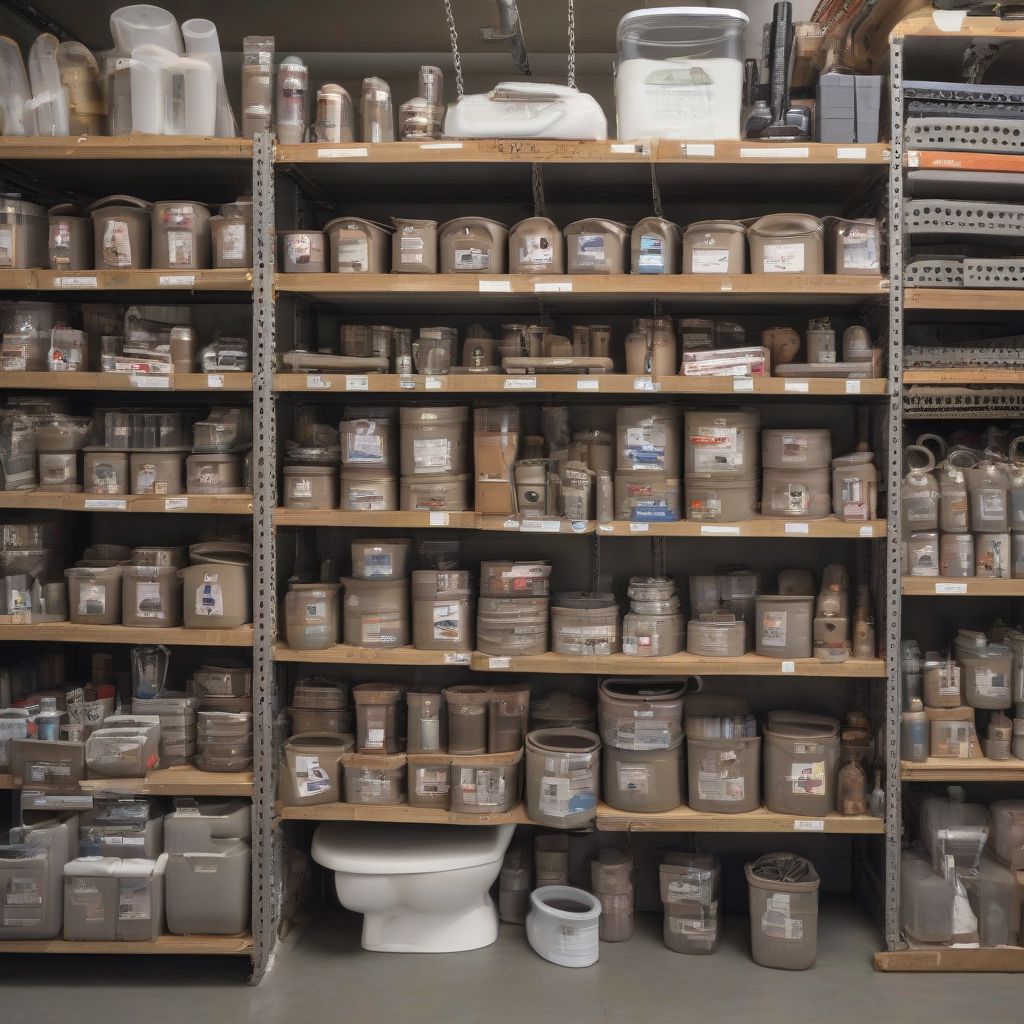A broken toilet bowl chain might seem like a minor inconvenience, but for businesses reliant on functional restrooms, it can disrupt operations and reflect poorly on your facilities. This is especially crucial for suppliers, warehouses, and distributors who frequently host clients and manage large workforces. Understanding the causes, solutions, and even the supply chain aspects of this common plumbing issue can offer valuable insights for any business.
Why Did My Toilet Bowl Chain Break?
Before we dive into solutions, let’s explore why toilet bowl chains break in the first place. Identifying the root cause can help prevent future occurrences. Here are some of the most common culprits:
- Corrosion: Over time, exposure to water and minerals can weaken the metal chain links, leading to breakage.
- Kinks and Bends: A chain that’s twisted or bent is more susceptible to snapping, especially at the stress points.
- Improper Installation: If the chain was installed too tightly or loosely, it’s more prone to breaking prematurely.
- Wear and Tear: Like any mechanical component, toilet chains have a lifespan. Frequent use can eventually lead to wear and tear.
Troubleshooting and Fixing a Broken Toilet Chain
Fortunately, fixing a broken toilet bowl chain is a relatively simple task, even for those without extensive plumbing experience. Here’s a step-by-step guide:
- Turn Off the Water Supply: Locate the shut-off valve behind your toilet and turn it clockwise to stop the water flow.
- Flush the Toilet: Empty the tank to prevent spills during the repair.
- Assess the Damage: Examine the chain to determine if it’s completely broken or simply detached.
- Chain Replacement (If Necessary): If the chain is broken, you’ll need a replacement. These are readily available at hardware stores and often come in universal sizes.
- Attach the New Chain:
- Remove the old chain from the handle arm and flapper.
- Attach one end of the new chain to the handle arm.
- Connect the other end to the flapper, ensuring there’s enough slack for the flapper to seal properly.
- Adjust Chain Length: The chain should have a slight amount of slack when the toilet is flushed.
- Turn On the Water Supply: Slowly turn the valve counterclockwise to restore water flow.
- Test the Flush: Flush the toilet several times to make sure the chain operates smoothly and the flapper seals correctly.
Supply Chain Considerations for Toilet Repair Parts
For businesses that manage multiple restrooms or large facilities, keeping essential repair parts in stock is essential to minimize downtime and maintain a professional image.
- Inventory Management: Designate a specific area for storing plumbing supplies, including toilet bowl chains, flappers, and other common repair parts.
- Vendor Relationships: Establish reliable relationships with plumbing supply vendors or wholesalers to ensure consistent access to high-quality parts at competitive prices.
- Bulk Purchasing: Consider purchasing frequently used parts like toilet chains in bulk to secure potential discounts and reduce the risk of stockouts.
Beyond the Broken Chain: Other Common Toilet Issues
While a broken chain is a frequent problem, other toilet malfunctions can arise:
- Running Toilet: This is often caused by a faulty flapper or fill valve, leading to wasted water and increased utility bills.
- Clogged Toilet: Blockages can occur due to excessive toilet paper, foreign objects, or plumbing issues.
- Leaking Toilet: Leaks can originate from the tank, bowl, or base, requiring prompt attention to prevent water damage.
 A variety of plumbing supplies, including toilet chains, flappers, and plungers, neatly organized on shelves in a warehouse setting
A variety of plumbing supplies, including toilet chains, flappers, and plungers, neatly organized on shelves in a warehouse setting
Conclusion
Addressing a “tuvithiennga.com/toilet-bowl-chain-broke/">Toilet Bowl Chain Broke” scenario efficiently is crucial for any business. By understanding the causes, solutions, and even the supply chain management aspects, you can ensure smooth operations and maintain a professional environment for your employees and clients alike. Remember, a well-maintained restroom speaks volumes about your attention to detail.
